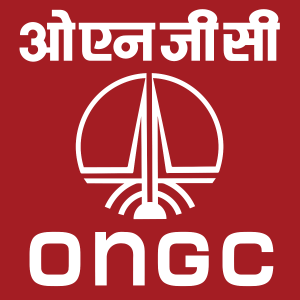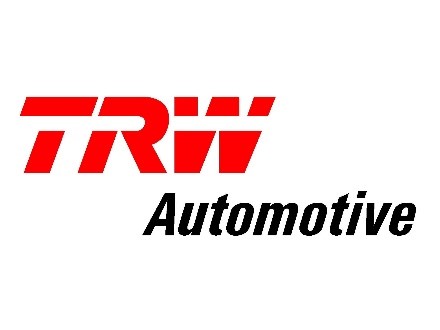CCI closes case of abuse of dominance against ONGC -accepts objective justification as a valid defence in one sided contract .

By way of order dated 02.08.2019, the Competition Commission of India (“CCI/Commission”) has closed allegations of abuse of dominant position by Oil and Natural Gas Corporation Limited (“ONGC”) in the market for charter hire of Offshore Support Vehicles (OSVs) in the Indian Exclusive Economic Zone (EEZ), after a thorough investigation by the Director General (DG) .
Background and allegations
In order to undertake Oil and Natural Gas (O&NG) Exploration and Production (E&P) activities, ONGC seeks support services from offshore oilfield services providers by way of a competitive bidding process. One of these services is the charter-hire of OSVs which are specialized vessels that support various stages of offshore O&NG E&P activities. The two types of OSVs which are predominantly used in the Indian EEZ are:
- Anchor Handling Tug Supply Vessel (AHTSV) – designed to tow rig anchors from one location to another and to lift and position rig’s anchors;
- Platform Supply Vessels (PSV) – to carry out supply duties and transit of manpower, fuel, fresh water, tools and materials to offshore drilling locations.
For procurement of the services of the OSVs, ONGC floats International Competitive Bidding (IBC) tenders which contained a model contract comprising of General Conditions of Contract (“GCC”) and Special Conditions of Contract (“SCC”) collectively referred to as the Charter Hire Agreement (“CHA”).
The information was filed by Indian National Ship-owner’s Association (“INSA/Informant”) comprising of 42 member including companies providing OSV services alleging that the terms of the CHA, which governs the contractual relationship between ONGC and the successful bidder, are one sided, onerous in nature and favorable to ONGC.
INSA had alleged the following clauses to be one side, unfair and ,therefore ,abusive:
- Clause 14.2 of the SCC- Unilateral right to terminate the agreement;
- Clause 18.2 and 23 of GCC- Unilateral termination in case of force majeure;
- Clause 27.1.2 and 27.1.4 of the GCC- Onerous clauses in relation to appointment of arbitrator
INSA also alleged that ONGC had issued termination notices for few contracts with its member companies which was indicative of abuse on its part owing to the dominant position held by it.
CCI prima facie Order
The CCI prima facie found ONGC to be dominant in the market for charter hire of OSVs (PSV and AHTSV) in the Indian EEZ. CCI was also of the opinion that the unilateral right of termination (Clause 14.2 of the SCC) as well its invocation by ONGC against some of the member companies of INSA prima facie appeared to be abusive in nature. However, as per the CCI, allegations pertaining to unilateral termination in case of force majeure and alleged onerous clauses in relation to appointment of arbitrator did not appear to be abusive. Accordingly, the Commission directed the DG to investigate whether the unilateral right of termination (Clause 14.2 of the SCC) as well its invocation by ONGC against some of the member companies of INSA amounts to abuse of dominance.
DG Investigation
Relevant Market
DG observed that the physical characteristics/end-use of OSVs demonstrated that the relevant product comprises of specialized vessels used for performing specific tasks to support offshore O&NG E&P activities, which in the present case pertains to two specific OSVs, namely AHTSV and PSV.
DG analyzed the use of such vessels across the globe and found that OSV deployment is directly linked to offshore E&P activity which is determined by oil prices. If oil prices are high, then demand for OSVs is stimulated and as prices decline, the E&P activities also decline, which led to idling of OSVs. The DG, accordingly inferred that had there been significant alternative employment opportunities for these specific OSV owners, they could have moved away from the E&P activity rather than idling their vessels, showing absence of an alternative market scenario. The DG found that as of November, 2018, nearly 30% of global OSV fleet was either idle or cold-stacked.
On the basis of consumer preference, the DG observed that the OSVs under question in the present case (i.e. PSVs and AHTSVs) are different from other types of vessels. The DG noted that OSVs have been defined to include PSVs and AHTSVs which constitutes about 46% of global offshore fleet, with other OSVs comprising the remaining 54%. However, in the Indian offshore market, the share of vessels other than OSVs (PSVs and AHTSVs) is 31%, and accordingly the DG observed, that though there are other types of OSVs in the Indian EEZ, mainly AHTSVs and PSVs are used. The DG further observed that all vessels are designed and are equipped to perform specific functions, and it is not operationally and commercially viable to utilize one type of OSV to perform the task of another type of OSV. Considering the distinct physical characteristics and end-use, the DG delineated the relevant product market as the “market for charter hire of OSVs (specifically PSVs and AHTSVs)”.
As regards the relevant geographic market, the DG noted that the O&NG industry operated under a highly regulated environment comprising various laws and regulations. It was observed that the National Exploration Licensing Policy (NELP) had been designed by the Government of India (GoI) in exercise of its sovereign rights of exploiting its natural resources in its EEZ. The Merchant Shipping Act, 1958, regulates all vessels registered in India as well as foreign flag vessels operating in the Indian EEZ and such Indian flag vessels are required to be registered in India with the Mercantile Marine Department (MMD) and fall within the regulatory purview of the DG-Shipping. As per the DG, these regulatory trade barriers coupled with national procurement policies make the Indian EEZ a distinct geographic market, and therefore, the relevant geographic market was taken as “the Indian EEZ”. Thus the DG defined the relevant market as the “ market for charter hire of OSVs (specifically PSVs and AHTSVs) within Indian EEZ”
Dominance
The DG observed that ONGC is the largest producer of crude oil and natural gas in India, contributing almost 70% to India’s domestic production of oil. DG also observed that ONGC had chartered/operated, approximately 80% of the offshore drilling rigs in the Indian EEZ.
Further, as on 01.01.2018, 45 out of the 48 contractually committed/operational offshore drilling rigs in the Indian EEZ were being chartered/operated by ONGC. As on 11.01.2018, there were 84 contractually committed/operational OSVs in India, out of which 69 were chartered by ONGC amounting to a market share of 82% in the market for charter hire of OSVs in the Indian EEZ.
In terms of size and resources, the combined group turnover of ONGC for the year 2016- 2017 was found to be INR 1,42,149 crore and the standalone profit was INR 17,900 crore.
The DG also discovered that 65 AHTSV vessels (as on 06.12.2018) were employed in the Indian OSV market by ONGC amounting to 63.1% of the market share, the remaining being hired by other E&P companies, namely Cairn Energy, British Gas, Reliance Industries and Gujarat State Petroleum Corporation. In case of PSVs, OP employed 31 out of the total 34 vessels that were hired, which accounted for 91.2% market share in 2018.
The DG further observed that in respect of economic power and commercial advantages enjoyed by an enterprise, ONGC being a PSU had a first-mover advantage which consequently led to winning of blocks and a position of dominance in the upstream market. Also, the presence of ONGC in all stages of the value chain in the E&P industry attributed to its strength in the market and brought along significant market power.
The DG also applied the Small but Significant Non Transitory Increase in Price (SSNIP) test and based on the instances of renegotiations of charter hire rates among ONGC and OSVs suppliers in May 2016, August, 2016 and May, 2017, the DG observed that the outcome of SSNIP test showed that ONGC was a hypothetical monopolist as OSV owners could not relocate to other markets/alternatives despite severe/significant downward adjustment in charter hire rates of such vessels. Thus, the DG was of the view that OSVs (specifically PSVs and AHTSVs) constitute the relevant product market in accordance with the economics of competition law. The DG also undertook Herfindahl Hirschman Index (HHI), a measure of market concentration analysis, which showed that market was highly concentrated.
Accordingly, DG concluded that the ONGC held a dominant position in the market for charter hire of OSVs (PSVs and AHTSVs) in the Indian EEZ.
Abuse of Dominant Position
The DG initiated his investigation by identifying the circumstances under which ‘termination for convenience’ i.e. a clause which allows termination without providing any cause or reason could be considered exploitative. The DG examined the legal position in USA, UK and India.
The DG noted that in USA, earlier the USA federal case law allowed the government to terminate the contract to get a better price as held in Colonial Metal Co. v. United States[1] , however, this decision was widely criticized and subsequently overturned. Subsequently, the test laid down in Krygoski Construction Co. v United States[2] was that termination for convenience is generally allowed except when exercised in good faith. This doctrine of ‘good faith’ was further developed in the case Quester Builders Inc. v CB Flouring LLC[3] in which it was held that the right to terminate a contract for convenience is a risk allocating tool. Therefore, in some cases, a change in circumstances may not be enough to justify termination for convenience, unless the termination clause is exercised in good faith.
As regards UK, the DG observed that under the English contract law, there is not general doctrine of good faith and the contracts can be terminated for convenience without the implication of duty to demonstrate good faith unless the contract specifically provides for such duty.
The DG also approached the competition authorities in UK, Europe and USA on whether the usage of termination for convenience amounts to abuse as per their respective laws or not. The DG was informed that USA does not have a provision of exploitative abuse and the UK and Europe’s competition authority had never examined the ‘Termination of Convenience Clause’ of a contract as a case of abuse of dominance.
As regards the position in India, the DG noted that the Supreme Court in Central Inland Water Transport Corporation Ltd & Anr. V. Brojo Nath Ganguly & Anr.[4], based on legal precedents, observed that for a termination clause without a cause to be valid, fair and reasonable, the bargaining power of both the parties should be at par. The DG also referred to the Specific Relief Act, 1963 and observed that the contracts which allow termination without reason are essentially determinable contracts, the specific performance of which cannot be granted and the only option with the aggrieved party in such a case is to claim damages for wrongful termination, if any.
Pursuant to the analysis undertaken, the DG observed that ONGC may exercise its express contractual right to terminate the contract irrespective of its reasons for doing so as long as it had complied with the contractual requirement of issuing a notice of termination as provided under the CHA. The DG also examined whether ONGC had acted in good faith while invoking the termination clause and observed that the price of crude oil had started declining form 2014, however, instead of immediately terminating the contracts, ONGC waited for a reasonable time for the market to stabilize. The DG also acknowledged the comments by Comptroller and Auditor General of India (CAG) in 2014-15 for ONGC not taking advantage of the changed demand-supply situation of the OSVs and continuing the existing contracts at a significantly higher charter day rates. The DG, therefore, observed that ONGC had exercised its right to issue termination notice in good faith owing to the prevalent market condition due to fall in crude oil prices and ONGC was justified in terminating the contracts to prevent itself from incurring further losses.
Apart from this, the DG also opined that issue raised by INSA was purely contractual in nature, and since the CHA was a private contract, the legal relationship between the OSV Providers and ONGC shall be governed by the terms of the contract and not the Competition Act, 2002 (“the Act”).
CCI Analysis
Preliminary Issue
CCI observed that ONGC, basing its reliance on the DG’s observation, had contended that the dispute is contractual in nature and is devoid of any competition concern, and therefore, CCI doesn’t have jurisdiction. To this, the CCI observed that although ONGC and OSV providers have existing CHA’s and the conduct of the parties will be governed by the terms and conditions contained therein, however, it does not ipso facto exclude the applicability of the Act and to conclude otherwise would mean that every case where the parties have some agreement between themselves, it will immune them from the applicability of the Act, which cannot be the case. The Commission observed that the present case is not one that involves only a lis between two parties to an agreement flowing from a breach thereof and the grievance of INSA is not that ONGC had breached the terms of CHA. On the contrary, the grievance is that ONGC, owing to its dominant position, secured certain terms and conditions in the CHA which favored it at the expense of OSVs. The Commission, therefore, held that it will be well within the jurisdiction to test the tenor of the clauses of the contract, the nature and position of the parties when such contract was entered into and at the time when the allegations of abuse are made, the special circumstances, if any, surrounding the execution of the contract, and the effect of the clauses when put in operation, to see whether it emanates from the diktat of a dominant enterprise.
Relevant Market
CCI agreed with the finding of the DG that OSVs under question in the present case (i.e. PSVs and AHTSVs) are different from other types of vessels based on the nature of services rendered by them in offshore O&NG E&P activities on account of their different technical make-up, functionality and end-use and considering the distinct physical characteristics and end-use, the Commission agreed with the relevant product market delineated by the DG i.e. “market for charter hire of OSVs (specifically PSVs and AHTSVs)” in the Indian EEZ.”
Dominance
The Commission noted that ONGC operates 45 out of 48 contractually committed/operational offshore drilling rigs in the Indian EEZ and therefore had a market share of 82% in the market for charter hire of OSVs (61% market share in AHTSV and 73% in PSVs). Apart from this, ONGC had a first mover advantage before the advent of New Exploration License Policy (NELP) in 1997 and its only competitor prior to it was Oil India Limited (OIL). The CCI noted that ONGC had won 121 out of 235 blocks in the 8 rounds of bidding under the NELP policy which indicated significant position held by ONGC in the upstream market for E&P activities and consequently charter hires the highest number of OSVs in the Indian EEZ. Further, ONGC is present at all stages of the value chain in E&P industry and there is no countervailing seller power with the OSV providers as the number of OSVs hired by an enterprise is directly proportional to the scale of its operations with 80% of the offshore drillings rigs in Indian EEZ are operated by ONGC. Accordingly, CCI found ONGC to be dominant in the relevant market for charter higher of OSVs (specifically PSVs and AHTSVs) in the Indian EEZ.
Abuse of Dominance
CCI observed that ONGC’s conduct had to be examined on two counts- (i) existence of Clause 14.2 of SCC itself which gives an unfettered right of unilateral ‘termination for convenience’ to ONGC and (ii) the use of this clause by ONGC to terminate its contracts with the OSVs in 2016.
Existence of ‘termination for convenience’ clause
CCI observed that the DG had found ONGC’ conduct not to be in contravention of the provisions of Section 4 (2) (a) (1) of the Act primarily due to the existence of objective justification owing to ‘change in circumstances’ and also because the invoking of the impugned Clause 14.2 was found to be exercised in ‘good faith’. The informant had contended that the defense of objective justification is not envisaged under the Scheme of Section 4 of the Act, especially for allegations pertaining to unfair terms/conditions.
The Commission observed that Section 4(2)(a)(i) of the Act primarily covers exploitative conduct within its ambit and the examination of exploitative conduct which involves imposition of unfair condition by a dominant enterprise in a B2B transaction shall undertake a fairness or reasonability test which requires examining both (i) how the condition affects the trading partners of the dominant enterprise and (ii) whether there is any legitimate and objective necessity for the enterprise to impose such condition.
Upon examining the legal position in UK, USA and India, the Commission observed that a provision of termination for convenience itself is not uncommon and should not generally be construed as unfair or abusive unless it is specifically used in an unfair manner without meeting the legal tests of ‘good faith’ and ‘change in circumstances’. The Commission observed that in the instant case, the termination of convenience clause only entitles ONGC to terminate the contract without assigning any reason while no such right is provided to the OSVs. The Commission acknowledged that any such one sided clause, being contrary to the legal principle of mutuality of contract, appears unfair, however, the feasibility and desirability of a reciprocal right will depend on where the balance of convenience lies on account of associated risks of the Parties to the agreement in terms of their respective business.
The Commission noted that ONGC had highlighted various risks which it is exposed to being in the E&P operations. ONGC not only bears the geological risk, i.e. the difficulty of extraction and the possibility that accessible reserves in any deposit will be smaller than estimated, but also the uncertainty of the worldwide price of crude oil which continuously determines the commencement and continuity of projects. The kind of projects being carried out by E&P companies cannot be shut down immediately and then restarted easily. On top of this, being governed by the government procurement rules, ONGC is required to follow an elaborate process of tendering, which means a long lead-time for hiring of vessels. At any given time, ONGC has a requirement of certain number of OSVs, which are indispensable to its E&P activities and if a contract is terminated at the behest of the OSV providers for their convenience, ONGC would have to re-issue a tender and pending its completion, the project would come to a standstill resulting in huge losses to ONGC, which will have implications for overall E&P activities in India as well.
Accordingly, the CCI observed that, keeping in mind the risks associated with the operations being carried out by ONGC, the mere existence of a unilateral right of termination for convenience does not amount to contravention of Section 4(2)(a)(i) of the Act.
Use of ‘termination of convenience clause’ by ONGC
The Commission noted that crude oil prices have a major impact on E&P activity and fall in such prices adversely impact the on-going E&P projects. The Commission observed that crude oil prices started falling drastically from mid-2014, from over 100 USD/barrel by January 2016, which affected the Oil E&P companies worldwide, pursuant to which, these companies reduced the rig counts since it was not economically viable to operate high cost rigs. Resultantly, there was excess supply of OSVs which was reflected in the significantly lower charter fare bid in the new tender floated by ONGC in 2016. The Commission observed that the price of oil fell drastically from over 100 USD/ barrel during mid-2014 to under 30 USD/barrel in January 2016. In April 2016, ONGC issued de-hiring notice to 27 vessels. The Commission observed that ONGC had invoked termination for convenience clause for the first time and it was evidently in response to the changing dynamics in the global oil market and consequently in the market for OSVs.
The Commission also took note of the record of discussions of Executive Procurement Committee (EPC) held on 25.05.2016 which revealed that the intent behind the terminations was to take advantage of the prevailing market situation and hire vessels at current market rates, which were substantially lower than the contracted rates. This intent was more evident from the fact that barring three vessels of Shipping Corporation of India Limited (member of INSA), the contracts were finally not terminated with the OSVs and only the prices were negotiated and brought down. CCI noted that the termination acted as more of a re-negotiation tool for bringing down the pre-determined contract prices in alignment with the prevalent prices.
CCI also acknowledged the fact that ONGC did not issue termination notices at the first instance of reduction in oil prices i.e. 2014, but, it waited for a reasonable time and until the expiry of the period mentioned in Clause 14.2. Also, the said clause was invoked for the first time that too in an unprecedented and exceptional situation, though the said clause had existed for 30 years.
CCI held that ONGC’s conduct was not motivated by any malice or with an intention to injure any particular OSV or OSVs in a discriminatory manner and being an enterprise governed by government regulations, the potential consequence of continuing with contract at substantially higher rates cannot be overlooked. Accordingly, the CCI held that there was an objective necessity to bring down the costs in new market circumstances and the termination was driven solely by that necessity and obligation.
In conclusion, the CCI held that the existence of ‘termination of convenience clause’ and the use of the said clause by ONGC was not in violation of Section 4 of the Act.
Pertinently, towards the end of the order, the CCI noted that if ONGC had invoked the said clause in a capricious manner and/or frequently in order to make illegitimate gains at the expense of the other contracting party, the Commission may have looked at the case differently.
COMMENT: This case illustrates acceptance of “objective justification” as a valid defence for apparently one-sided clauses imposed by dominant buyer on sellers provided that the exercise of discretion vested under such clause is made bona fide .
[1] 494 F.2d 1355 (Fed. Cir. 1974)
[2] 94 F. 3d 1537 (Fed. Cir. 1996)
[3] 978 A. 2d 651 (Md. Ct. App. 2009)
[4] 1986 AIR 1571







